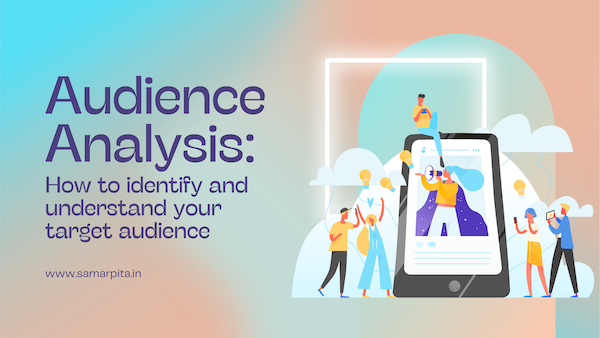Understanding your audience is the foundation of any successful content or social media strategy. Without knowing who you’re speaking to, your efforts may fall flat. Audience analysis helps you create content that resonates, builds trust, and drives engagement. Let’s explore how you can identify and understand your target audience to craft better strategies.
Also Read: What is Content Marketing & How Can It Benefit You?
Why Audience Analysis Matters
Before diving into tactics, it’s important to understand why audience analysis is crucial. When you know your audience, you can tailor your message to their needs, preferences, and pain points. This not only saves time and resources but also ensures your content hits the mark every time. Whether you’re writing a blog post, editing a manuscript, or planning a social media campaign, audience insights guide your decisions.
Step 1: Define Your Target Audience
Start by asking yourself: Who are you trying to reach? Your target audience isn’t “everyone.” It’s a specific group of people who are most likely to benefit from your content or services. For example, if you’re a small business selling eco-friendly products, your audience might be environmentally conscious consumers aged 25-45.
To define your audience, consider demographics like age, gender, location, income, and education level. Also, think about psychographics—their interests, values, and lifestyle. Tools like Google Analytics, social media insights, and customer surveys can help you gather this data.
Step 2: Understand Their Pain Points
Once you know who your audience is, dig deeper to understand their challenges. What problems are they trying to solve? What questions do they have? For instance, if you’re a manuscript editor, your clients might struggle with structuring their stories or polishing their grammar. Addressing these pain points in your content positions you as a helpful resource.
Also Read: What Makes Quality Content the Backbone of Any Business?
You can uncover pain points by reviewing customer feedback, reading comments on social media, or conducting interviews. Pay attention to recurring themes—these are the issues your audience cares about most.
Step 3: Analyze Their Online Behavior
Where does your audience spend their time online? Are they active on Instagram, LinkedIn, or TikTok? Do they prefer reading blogs or watching videos? Understanding their online behavior helps you choose the right platforms and formats for your content.
For example, if your audience is professionals, LinkedIn might be the best place to share thought leadership articles. If they’re younger and visually oriented, Instagram or TikTok could be more effective. Use platform analytics to see where your audience engages the most.
Step 4: Create Audience Personas
Audience personas are fictional profiles that represent your ideal customers or readers. They help you visualize your audience and keep their needs in mind while creating content. A persona might include details like:
- Name: Eco-Friendly Emma
- Age: 32
- Occupation: Marketing Manager
- Interests: Sustainability, yoga, and travel
- Challenges: Finding time to shop for eco-friendly products
Creating personas makes your audience feel real and relatable. It also ensures your content speaks directly to their needs and interests.
Step 5: Test and Refine Your Approach
Audience analysis isn’t a one-time task. As your audience evolves, so should your strategies. Regularly review your analytics to see what’s working and what’s not. Are certain types of content getting more engagement? Are there new trends your audience is following?
A/B testing can also help you refine your approach. For example, try posting the same content at different times or in different formats to see what resonates best. Use the insights to tweak your strategy and stay relevant.
Also Read: Foolproof Ways That SMBs Can Drive Leads & Sales with Content
Practical Tips for Better Audience Analysis
- Engage with Your Audience: Respond to comments, messages, and emails. This not only builds relationships but also gives you firsthand insights into their needs.
- Monitor Competitors: See what your competitors are doing and how their audience responds. This can reveal gaps or opportunities in your own strategy.
- Use Surveys and Polls: Ask your audience directly about their preferences and challenges. Tools like Google Forms or Instagram polls make this easy.
- Stay Updated: Trends and audience preferences change over time. Keep an eye on industry news and adapt your strategies accordingly.
The Impact of Audience Analysis on Your Work
For a manuscript editor, understanding your audience means knowing what readers expect from a genre or style. For a social media manager, it means crafting posts that spark conversations and drive clicks. And for a content writer, it means creating pieces that solve problems and inspire action.
When you invest time in audience analysis, you create content that feels personal and relevant. This builds trust, fosters loyalty, and ultimately drives better results for your business or clients.
Also Read: Content Marketing Metrics That Drive Small Business Success
Final Thoughts
Audience analysis isn’t just a step in the process—it’s the backbone of effective content and social media strategies. By defining your audience, understanding their pain points, and tailoring your approach, you can create content that truly connects. Start small, gather data, and refine your strategies over time. The more you know about your audience, the more impactful your work will be.
Take the time to listen, learn, and adapt. Your audience will thank you—and your results will show it.
I’m participating in #BlogchatterA2Z.
———————————————————————
Are you a coach or business owner looking for a content writer for your website or social media? I can help you create compelling, high-quality content that drives results. Reach out to me at editor@samarpita.in. You can also connect with me on Instagram @samarpita and X @samarpitadotin. Visit my website www.samarpita.in to learn more about my services.

